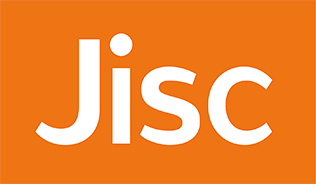An Empirical Inquiry into the Role of Internet Connectivity on Financial Accessibility
DOI:
https://doi.org/10.54536/ajebi.v4i2.4720Keywords:
Diminishing Marginal Returns, Dynamic Panel Data Regressions, Financial Inclusion, GMM, Information and Communication Technologies, Internet Users, Mobile Phones, Physical Bank BranchesAbstract
This paper examines the role of Information and Communication Technologies (ICT) in enhancing financial inclusion across 120 countries from 2004 to 2017. Employing a dynamic panel data (Generalized Method of Moments, GMM) methodology, it addresses two primary questions: how communication technology affects financial inclusion and whether the gains differ across developing, emerging, and developed nations. The results indicate a positive and statistically significant impact of communication technology on financial inclusion, with a relatively higher elasticity for mobile phone users in middle-income and high-income countries. Furthermore, the significance of physical bank branches diminishes once communication technology variables are included, suggesting a distinct channel through which ICT fosters financial access. The elasticity of physical bank outlets is higher for middle-income economies than for high-income counterparts, whereas the influence of communication technology is greater among high-income countries. These findings call into question potential diminishing marginal returns from communication technology. Although the model includes less developed countries in the sample, it does not adequately explain their within-group variation.
Downloads
References
Aghion, P., Howitt, P., Brant-Collett, M., & García-Peñalosa, C. (1998). Endogenous growth theory. MIT press.
Andrianaivo, M., & Kpodar, K. (2012). Mobile phones, financial inclusion, and growth. Review of Economics and Institutions, 3(2), 30.
Angrist, J. D., & Pischke, J. S. (2017). Undergraduate econometrics instruction: through our classes, darkly. Journal of Economic Perspectives, 31(2), 125-144.
Arellano, M., & Bover, O. (1995). Another look at the instrumental variable estimation of error-components models. Journal of econometrics, 68(1), 29-51.
Baltagi, B. H. (2008). Forecasting with panel data. Journal of forecasting, 27(2), 153-173.
Barro, R. J. (1996). Determinants of economic growth: A cross-country empirical study.
Beck, T., Demirguc-Kunt, A., & Peria, M. S. M. (2007). Reaching out: Access to and use of banking services across countries. Journal of financial economics, 85(1), 234-266.
Bond, S. R., Hoeffler, A., & Temple, J. R. (2001). GMM estimation of empirical growth models. Available at SSRN 290522.
Choi, C., & Yi, M. H. (2009). The effect of the Internet on economic growth: Evidence from cross-country panel data. Economics letters, 105(1), 39-41.
Love, I., & Mylenko, N. (2003). Credit reporting and financing constraints (No. 3142). World Bank Publications.
Niebel, T. (2018). ICT and economic growth – Comparing developing, emerging and developed countries. World Development, 104, 197–211.
Nsouli, S. M., & Schaechter, S. (2002). Challenges of the e-banking revolution. Finance & Development, 39(3).
Romer, P. M. (1986). Increasing returns and long-run growth. Journal of political economy, 94(5), 1002-1037.
Roodman, D. (2009). A note on the theme of too many instruments. Oxford Bulletin of Economics and statistics, 71(1), 135-158.
Roodman, D. (2009). How to do xtabond2: An introduction to difference and system GMM in Stata. The stata journal, 9(1), 86-136.
Salahuddin, M., & Gow, J. (2016). The effects of Internet usage, financial development and trade openness on economic growth in South Africa: A time series analysis. Telematics and Informatics, 33(4), 1141-1154.
Sassi, S., & Goaied, M. (2013). Financial development, ICT diffusion and economic growth: Lessons from the MENA region. Telecommunications Policy, 37(4–5), 252–261.
Shamim, F. (2007). The ICT environment, financial sector and economic growth: a cross-country analysis. Journal of economic studies, 34(4), 352-370.
Tcheng, H., Huet, J. M., Viennois, I., & Romdhane, M. (2007). Telecoms and development in Africa: The chicken or the egg. Convergence Letter, 8(16), 16.
Waverman, L., Meschi, M., & Fuss, M. (2005). The impact of telecoms on economic growth in developing countries. The Vodafone policy paper series, 2(03), 10-24.
World Bank. (2012). ICT for greater development impact: World Bank Group strategy for information and communication technology, 2012–2015. https://hdl.handle.net/10986/27411
Downloads
Published
How to Cite
Issue
Section
License
Copyright (c) 2025 Nabeel Maqsood, Choong Lyol Lee, Sumaila Zuberu

This work is licensed under a Creative Commons Attribution 4.0 International License.














